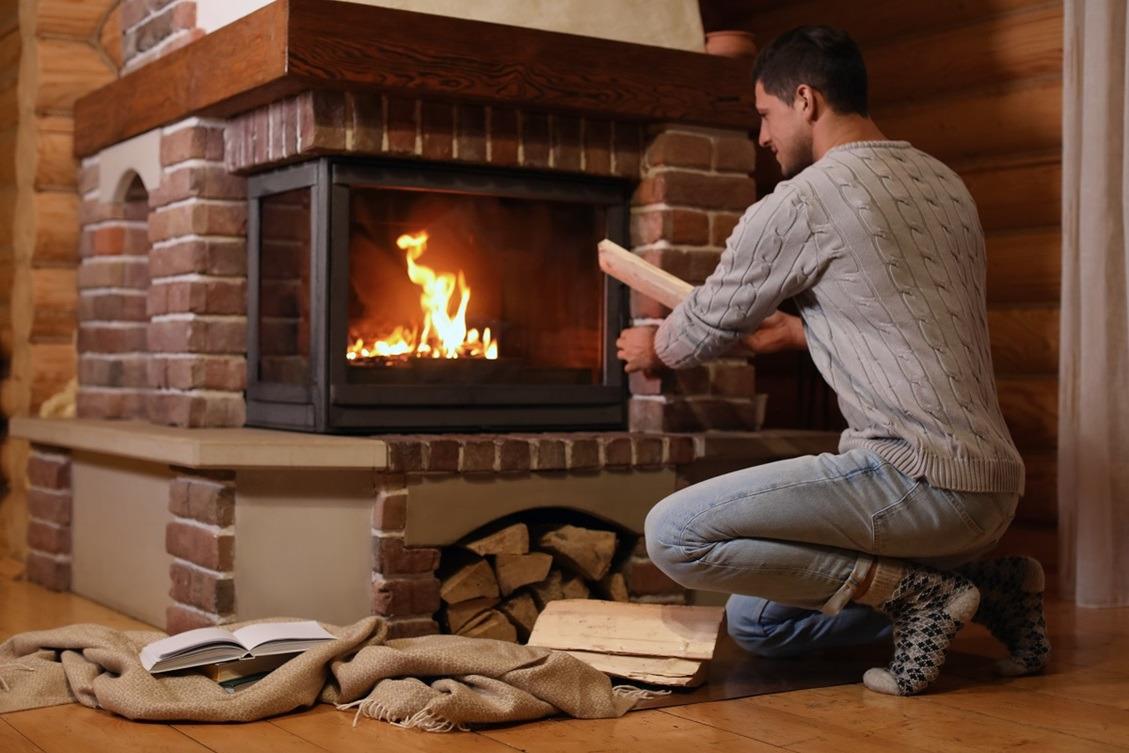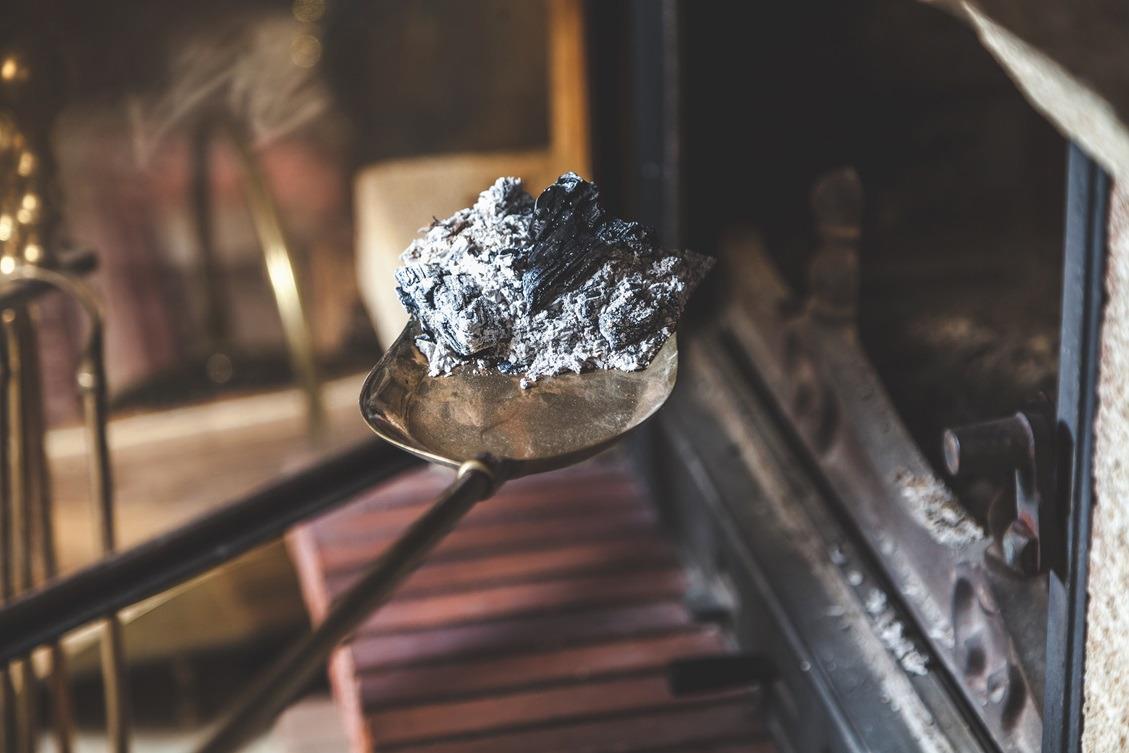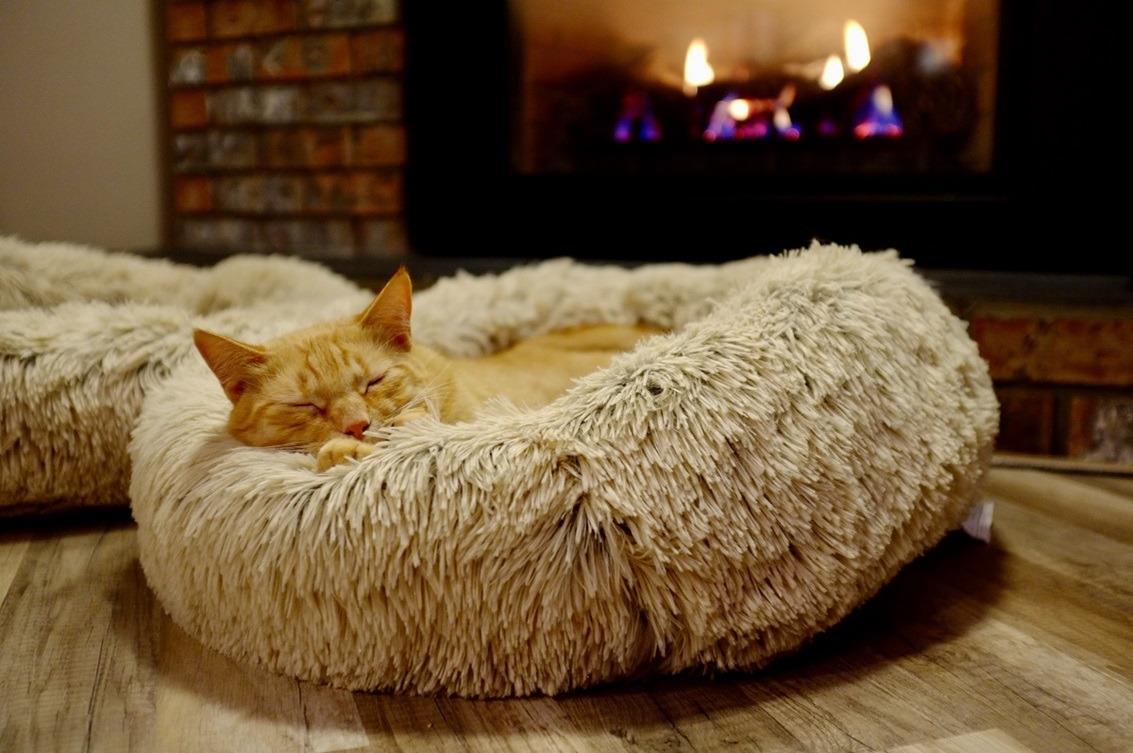Chimney fires are no joke with flames roaring up to a scorching 2,000°F! That kind of heat isn’t just dramatic; it can cause significant damage to your home.
The National Fire Protection Association states heating equipment is one of the top causes of home fires in the U.S. Firefighters respond to approximately 38,881 heating-related home fires every year, and chimney fires alone cause nearly a quarter of all the property damage in these incidents. Yikes!
The good news? You can help keep your chimney in check with just a few easy steps.
Fired up: Mastering safe wood fireplace use
Preventing a chimney fire starts by using your wood fireplace safely.
Get the log-gistics right
Only use appropriate materials in your wood fireplace, such as dry, seasoned wood. This material is cleaner for the environment and has less soot and creosote buildup, which can help prevent a fire. (More on this in a moment!)
When using artificial logs, make sure they are approved by the Chimney Safety Institute of America and follow the manufacturer's instructions.
How to kick-start your fireplace
Only utilize newspaper, kindling wood, or fire starters to ignite a fire. Avoid using flammable liquids like lighter fluid, kerosene, or gasoline, as they emit invisible vapors that can ignite easily. This can lead to a large fire capable of devastating your home.
One log at a time
Never burn more than one log at a time, and always keep the fire at a safe level. Never include any items or substances not meant to burn.
Give your fire breathing room
Good airflow helps the fire burn hotter, keeps the draft moving smoothly, and reduces creosote buildup. Less creosote means less chance of chimney fires, and that’s a win for both your home and your peace of mind!
When using your fireplace, the damper is key to safe and efficient operation. Open it before starting a fire to allow proper airflow. This ensures smoke escapes up the chimney and heat stays in your home. Always keep the damper open until the fire is completely out and the embers have stopped burning. When the fireplace is not in use, close the damper entirely to prevent drafts and keep your home secure.
Also, when using your fireplace, consider cracking open a window near it, and always follow the manufacturer’s instructions.
How to safely put out your fire
When it’s time to extinguish your fire, start by using your fireplace poker to spread out the wood and embers. Next, use a fireplace shovel to scoop ash from the bottom of the fireplace and cover the embers and logs with it. Sprinkle baking soda over the embers to fully extinguish them. Let the ashes cool for at least three hours (or longer, if needed). Some fires do need significantly longer cooling time.
Once cooled, transfer the ashes to a tightly sealed metal container, douse them with water, and store the container at least 10 feet away from your home or any nearby buildings. Safety first for a worry-free cleanup!
How to help keep your fireplace in safe shape
Get rid of fire’s best friend
A buildup of creosote, a natural byproduct of wood, can create a dangerous situation in your chimney. This mixture of smoke, water vapor, wood particles, tar, and other elements is highly flammable. The more you use your fireplace, the more creosote will build up, and the higher the chance of a home fire will be. Many fires start when a buildup of creosote (or a blockage) ignites in the flue.
To help prevent a chimney fire, make sure to get your chimney cleaned at least once a year before you use it for the season. A certified chimney sweep (think Bert from Mary Poppins) should thoroughly clean and inspect your chimney, checking for cracked or damaged brick and mortar.
Keep your fireplace in check
A good-working fireplace is a safer fireplace. In between cleanings, a fireplace should be maintained by completing these simple steps:
- Check the firebox for cracks or loose joints.
- Open the damper completely. It should move freely and sit snugly against the throat.
- Make sure the metal is solid with no cracks, pitting, or rusted areas. If your damper is not in good shape, hire a professional to inspect and replace it.
- Look for any visible signs of damage in the flue using a high-powered flashlight. Metal flue liners should look clean with joints well aligned. Tile or masonry flue liners should be solid and free of cracks.
- Make sure the chimney is free of any leaves or debris.
If you notice any of these issues, call a professional to fix the issue.
Cap your chimney
Consider adding a chimney cap. This device at the top of your flue opening can help keep squirrels, birds, and their nesting materials (as well as other debris) out of your chimney. It will also prevent smoke from re-entering the chimney and creating issues inside your home. Get a professional for installation as DIY-ing this can be dangerous and void the cap’s warranty.
Safe & snug: quick fireplace tips to remember
Some chimney fires are the result of improper use. Help to keep your house safe by following these safety precautions:
- Never use your fireplace as a furnace. They are built for short-term fires, typically no longer than five hours.
- Never leave a lit fireplace unattended.
- Keep children and pets away from the outside vents. Create a “kid-free zone” around the fireplace of at least three feet. Glass doors and screens can remain dangerously hot for several hours after the fire goes out.
- Equip your home with the necessary safety equipment – a fire extinguisher, carbon monoxide alarm, and smoke alarms – and keep them in good working order.
Also, consider buying Chimfex® Chimney Fire Extinguisher. This product is a designated approved product by the Chimney Safety Institute of America and is used by professional firefighters nationwide. It can extinguish chimney fires in as little as 22 seconds and help to prevent fire damage to your home.
However, if a fire does occur in your home, the best thing you can do is - get out and stay out.
If you have a wood stove…
Your home is also at risk of a chimney fire. If one occurs, the connector pipes from the wood stove to the chimney can become damaged and may allow the fire to enter your home. Take the above necessary precautions when using a wood stove, so you may enjoy the heat without the danger.
Beware of carbon monoxide
A chimney’s job is to remove smoke and other harmful gasses, such as carbon monoxide (CO), from your home. The process of burning wood can create CO, an odorless, tasteless and potentially deadly gas, that can easily find its way into your home through the cracks of a damaged liner or if your chimney is clogged. More than 50,000 people visit the emergency room each year due to CO poisoning, so make sure you have working carbon monoxide detectors where they need to be in your home.
Also, as previously mentioned, get your chimney cleaned and inspected at least once a year to identify damage to your chimney and prevent dangerous situations.
Help protect your home and happiness
Protect what matters most with the help of POM HomeAssist. This app, exclusively for POM homeowner policyholders, can help you take care of your home with:
- Helpful notifications specific to your property.
- Personalized home maintenance reminders.
- Home care recommendations from the experts.
- A secure place to upload and store any home information, pictures, or documents.
Gain peace of mind with POM HomeAssist. Download today from Google Play or the App Store!